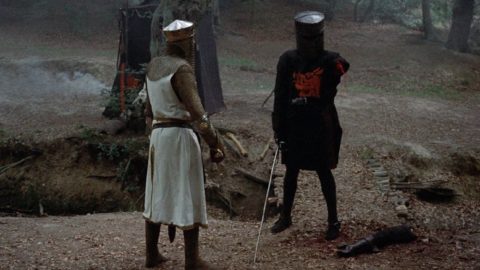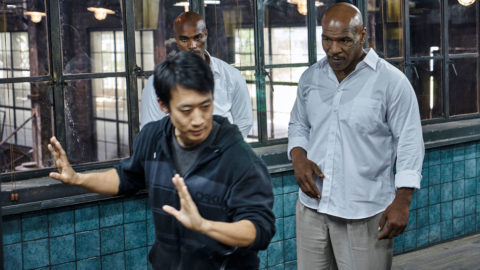Breaking Rules in Striking
Nathan Wagar
I am a boxing coach, and that means I can be as cliquish about my technique preferences as anyone. Boxing gyms in the grungy nooks of your town are still very much operating according to the old competing schools mentality where every gym has its own style and pre-fight rituals, and questioning “why” would get you accidentally caught with a focus pad. You think Sylvester Stallone in Rocky drinking raw eggs was gross? There are still people in some places drinking their own urine and swearing by it.
Brazilian Jiu Jitsu is less so because of the incredible amount of cross training and global competition, but in the earlier days the “Darce” choke and the “De La Riva” guard were only used by certain gyms, and were jealously guarded secrets, at least as long as they could reasonably remain so.
The leg drag guard pass was something only regularly done by the Sao Paulo gyms for several years before other gyms began following suit. This is why the term “creonte” takes on such a bitter flavor in the Jiu Jitsu community, because gym prestige not only went along bloodlines but also technical lines. Details in some camps would never be found elsewhere, and so leaving one team to go with another was frowned upon, particularly when someone was still moving up in rank.
Now in boxing, we have our own technical quarrels, and perhaps one of the most debated is on how to throw the hook. Some are strong advocates of a vertical fist where the hook is thrown with the thumb up. Others prefer the palm down approach, and they give their impassioned arguments in favor of this method over the former. Some coaches raise the elbow up immediately and “turn the fist over,” using body rotation to deliver the force, while others may throw a looser hook and step out or “root” to deliver force along their attack line.
I have dealt with this myself as a coach more times than I can count. After all, how can I spend the class teaching the technical merits of a tight, properly delivered liver punch, only to have Bas Rutten put out a video breaking every rule in the book?
What is my athlete supposed to think when a former world class fighter directly contradicts his own coach’s advice, with not only good success but a seemingly solid reasoning behind it? To say “Yeah but you’re not Bas Rutten” may have an element of truth but it is not only insulting, it may prove to come back to haunt you as your former client raises the belt over his head in the ring.
One of the cool things about coaching is that as you apply and learn to teach applications of your skill set in new contexts, you start to grasp the underlying logic of striking as a complex system. And one of the truisms of complex systems is that there are many different ways to come to a solution for a given question, it just matters what variables you choose to look at. This would be the model through which we view the question of striking.
Once you come to this realization, you see that there are a few universals in good punching that manifest in the form of feedback loops and sliding scales, that balance what we can do and the pros and cons of such, with what we are actually trying to do in the moment.
Bas Rutten’s model of striking takes certain factors into account that are unique to his experiences, his approach to the game, the rules of his particular sporting event, and the universals that he adapts in the moment to achieve his goal of making your liver cry.
The broadest truths of striking are always more “static” systems, in the sense that they are more abstract and remain true in spite of the more “dynamic” systems of details. The more specific we get, the less universal a statement we can make. What this also means is that we can change the variables as needed in order to still adhere to the broader universal. Let’s take a look at a common boxing coaching adage, some universals as well as variables and see how they affect and drive good technical adaptation.
1. “Just raise your elbow and turn your fist over for the hook.”
This is a very specific application of a broader context of having a tight arm angle when throwing a hook punch, in contrast to a wider, looping shot. I prefer tighter shots when attacking the body, for instance, so it’s a generalized approach to throwing hooks. Now instead of looking at this as an isolated technique, let’s look at it as more of a sliding scale of resources.
On the one hand, if I allow myself more leeway in the looseness of my hook, I have more targeting options against my opponent, so that’s a plus for positive feedback. On the other hand, allowing myself a broader range of angles than just a tight hook also leaves my defensive lines more exposed to attack, so that’s a minus on defense.
The broader concepts of attack and defense are driving the more immediate application of punching style, and we can map out the pros and cons and see where some variables need to be reinforced. Attack and defense are just two that I have chosen for this discussion, there are of course many more that can be used for your own analysis.
Since a looping style of shot is positive on attack but negative on defensive ability, we would expect to see another variable added to this punching style to offset its deficiencies. Footwork to get the angle, for instance, is a strong application of both attack and defense, and so a looping hook variable can be applied when, and only when, you have the variable of getting the angle, so that you don’t risk taking a shot to the face.
In the case of a body shot, getting the angle or changing levels is a common way of compensating for the negative in defense. There are also more subtle ways such as manipulating rhythm and timing. When looking at how Bas throws his liver shot in the demonstration, he changes angles and lowers his level as one would expect to make up for lowering his hands and throwing the looping hook. But how does this offset the fact that he loads up, seemingly telegraphing the shot? Well, let’s let Bas speak for himself:
Notice that he has a firm understanding of the pros of his chosen variable, as well as the deficiencies, and so his game plan incorporates reinforcing variables so that his system works. This may not seem to always be the best approach with newer athletes since they don’t have this level of understanding of the game, but that’s where coaching drills take on their importance. Teaching a new athlete statically on pads, for instance, offers no gradual learning of the game, and they will experience a rude wake-up call in sparring when their rigid “tight hook” game doesn’t mesh well with an opponent moving in and out of range.
When this happens, the newer athlete will tend to loosen his hooks up anyway to actually hit the opponent, but without the adjustments with secondary variables that are necessary to keep him safe. Then he gets caught in the chin, and his coach says “See?”
But this is missing the point. The newer athlete will eventually learn how to compensate anyway using good footwork and other variables, to make his tight hook game work within a dynamic framework. The only difference is that he never learned how to do the same with a loose framework.
A better approach would be to work dynamic adjustment into the focus mitt drills from the very beginning. Teach the new client how to adjust footwork and punching angle in tandem according to range, for instance. Have the opponent move through the combination instead of staying as a static target. Allow your athlete opportunities to work through the problem and see how all the pieces of the game fit together.
In summary, whenever you are having an issue or debate on immediate technical application, the answer can usually be found higher up on the concept tree. We used attack and defense, but you could always take into account things like conditioning or timing. This is where experience as a coach becomes helpful for determining which variables are most important, and when.
Then, find out the pros and cons of the variables. Remember, we are limited creatures in time and space, and some movements are a zero sum game in a certain sense; a pro in one area can mean a con in another. Finally, incorporate other variables that strengthen the negatives in the variable you are having an issue with, and watch your striking knowledge deepen.










 Rob Brotzman
Rob Brotzman  Nathan Wagar
Nathan Wagar